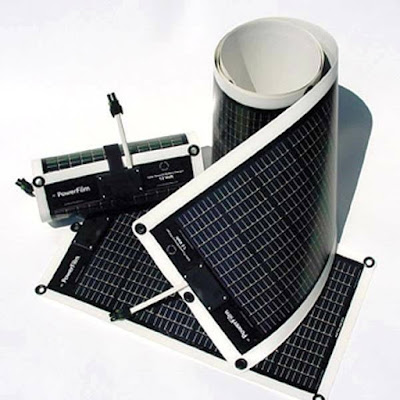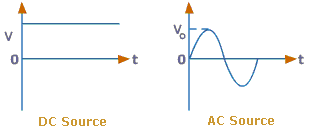In our household there are two types of electrical appliances, i) DC ii) AC.
In some electronics device that could be both but basically driving current as ac or dc current...
In world today in every house or every store or in every office most of electrical products are AC built in system...because the generation of electricity is coming from synchronous generators alias alternators which are AC generators, so there is no other
choice for manufacturers to develop but AC electrical appliances could be AC bulbs, fans or freezer...
Now you could ask me why not DC power are generated from the electricity manufacturing company at the first place, the answer is they are not rookies.It takes much more cost in some case impossible to generate huge DC power from energy conversion technology.
Yes in this case Solar Technology is the best because this is the only source where you can expect huge DC power comparing to other but still you can't compare with alternator technology which is built in AC.
Here everything put on a question which product should be manufacture, which is more efficient and available and cost effective.
The answer is not that easy and I will tell you why, as because about 98% of the world electricity generation is AC power and other 1~2 % is DC power, so by general condition every manufacturer company will decide to produce AC products but where DC product is the most efficient and cost effective.
Benefits of DC products :
- It consumes the least power ( Even DC Iron, TV, Cooker are less than 200W which is amazing, you can't find in AC but same capacity products)
- It is the best for household system because it is low in voltage and more safer.
- Electricity Savers (the best)
- Compare DC products to AC product you will find approximately 20~300W differences with the same capacity product which is outstanding.
- 1 AC Light = 4~10 DC lights, 1 AC TV = 5 DC TV, 1 AC Cooker = 3~4 DC Cooker, here you can imagine how much electric bill you can save (My God).
- More important we can use solar power to run this DC product and which is amazing because solar power is free just you need first installation cost , and it is totally off-grid which means no load-sheeding.
- May be one day if every home, office or store install a solar system of 500W with a good storage battery bank probably 50% of the government power generation will be saved for the future.
- And thanks to God that we have technology of flexible solar panels which we can use anywhere with DC products like , Solar Bag, Solar power Bank, Solar Mobiles etc.
- In house DC products can be more efficient if you have solar tables and solar products (Solar table lamp) which use indoor light to generate DC power (Amazing).
More or less every day we need DC and AC product but in future may be if possible there will be only DC appliances in every home and why not just think about the money that DC products gives over AC products.
May be one day we don't need to pay electric bill anymore or it could be like 20~50Tk/month... Just a dream (InsaAllah).








































